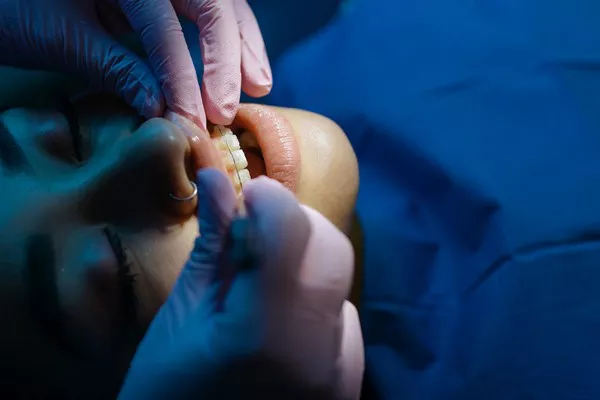Temporary tooth fillings are a common dental procedure designed to provide short-term relief while awaiting a more permanent solution. The cost of a temporary tooth filling can vary widely depending on several factors, including location, the complexity of the procedure, and the materials used. On average, patients in the United States can expect to pay between $90 to $250 for a temporary tooth filling. However, it’s essential to note that these costs can fluctuate based on individual circumstances and the dentist’s pricing structure.
Factors Influencing Cost
Several factors can influence the cost of a temporary tooth filling:
- Dentist’s Location: The cost of dental procedures can vary significantly depending on the region and even within the same city. Urban areas tend to have higher dental costs compared to rural areas due to factors such as overhead expenses and demand.
- Complexity of the Procedure: The extent of decay or damage to the tooth will impact the complexity of the filling procedure. More extensive decay may require additional time and materials, thus increasing the overall cost.
- Materials Used: The type of material used for the temporary filling can affect the cost. While traditional amalgam fillings may be more affordable, composite resin fillings, which closely match the color of natural teeth, tend to be more expensive.
Comparison with Permanent Fillings
Temporary fillings serve as a short-term solution to protect the tooth while awaiting a permanent restoration. As such, temporary fillings are generally more affordable than permanent fillings. The cost of permanent fillings can range from $100 to $500 or more per tooth, depending on the type of filling material used (e.g., amalgam, composite resin, gold). Additionally, permanent fillings require more extensive preparation and placement procedures, contributing to their higher cost compared to temporary fillings.
Insurance Considerations
Dental insurance coverage for temporary fillings varies depending on the insurance provider and the individual’s policy. While some dental insurance plans may cover a portion of the cost of temporary fillings, others may consider them as elective or cosmetic procedures and provide limited or no coverage. It’s essential for patients to review their insurance policy details and consult with their insurance provider to determine coverage for temporary fillings.
Purpose of Temporary Fillings
Temporary fillings serve several purposes in dental treatment:
- Protection: Temporary fillings help protect a tooth that has undergone certain procedures, such as a root canal or tooth extraction, by sealing off the tooth’s interior from bacteria and debris.
- Preservation: In cases where a permanent filling or crown is planned but cannot be immediately placed, a temporary filling helps preserve the tooth’s structure and function until the final restoration can be completed.
- Pain Relief: Temporary fillings can provide temporary relief from tooth sensitivity or discomfort caused by decay or damage until further treatment can be administered.
Duration and Follow-Up
The typical lifespan of a temporary filling is relatively short, ranging from 6 to 8 weeks. During this time, patients are advised to schedule follow-up appointments with their dentist for a permanent restoration. Failure to replace a temporary filling promptly can lead to complications such as further decay or damage to the tooth. Additionally, temporary fillings may become dislodged or worn down over time, necessitating replacement to maintain tooth protection and integrity.
Additional Costs
While the cost of the temporary filling itself is relatively straightforward, there may be additional costs associated with the procedure:
- Emergency Dental Visits: If a temporary filling becomes dislodged or causes discomfort, patients may need to schedule emergency dental visits for repairs or adjustments, which can incur additional costs.
- Subsequent Permanent Fillings: Patients who receive temporary fillings as an interim solution may incur additional costs when undergoing permanent restorations such as fillings or crowns. These costs should be discussed with the dentist during the treatment planning process to ensure transparency and financial preparedness.
Conclusion
The cost of temporary tooth fillings can vary depending on various factors, including location, procedure complexity, and materials used. While temporary fillings offer a more affordable short-term solution compared to permanent fillings, they serve an essential role in protecting and preserving teeth until permanent restorations can be completed. Patients are encouraged to discuss their treatment options and associated costs with their dentist to make informed decisions about their oral health care.
FAQs About Temporary Fillings
1. What are the disadvantages of temporary fillings?
Temporary fillings serve as a short-term solution to protect a tooth while awaiting a permanent restoration. While they offer several benefits, they also come with some disadvantages:
- Limited Lifespan: Temporary fillings are designed to last for a relatively short period, typically between 6 to 8 weeks. They may degrade or become dislodged over time, requiring replacement.
- Susceptibility to Damage: Temporary fillings are not as durable as permanent fillings and may be more prone to damage from chewing or biting forces. Patients are often advised to avoid hard or sticky foods to prevent premature dislodgement.
- Risk of Infection: Temporary fillings provide a temporary seal over the tooth but may not fully prevent bacterial infiltration. This leaves the tooth vulnerable to infection if proper oral hygiene practices are not maintained.
- Cosmetic Concerns: Temporary fillings may not match the color or appearance of natural teeth as closely as permanent fillings, leading to aesthetic concerns, especially in visible areas of the mouth.
2. Can a temporary filling last 6 months?
While temporary fillings are intended for short-term use, under certain circumstances, they may last longer than the typical lifespan of 6 to 8 weeks. Factors such as the type of material used, the location of the filling, and the patient’s oral hygiene habits can influence the longevity of a temporary filling. However, it’s essential to recognize that temporary fillings are not meant to be a permanent solution and should be replaced with a permanent restoration as soon as possible to prevent complications.
3. Will temporary filling stop toothache?
Temporary fillings can provide temporary relief from toothache by sealing off the exposed nerves and protecting the tooth from further irritation. They can help alleviate discomfort caused by decay, damage, or sensitivity until further treatment, such as a permanent filling or root canal therapy, can be administered. However, temporary fillings may not completely eliminate toothache in all cases, especially if the underlying cause of the pain is severe or requires more extensive treatment.
4. Why do temporary fillings fall out?
Temporary fillings may fall out for several reasons, including:
- Wear and Tear: Temporary fillings are not as durable as permanent fillings and may wear down or degrade over time, especially if subjected to excessive chewing or biting forces.
- Poor Adhesion: Temporary fillings rely on adhesive properties to bond to the tooth structure. If the tooth surface is not adequately prepared or if moisture contamination occurs during placement, the filling may not adhere properly and could dislodge.
- Tooth Movement: Changes in tooth position or alignment, such as shifting due to orthodontic treatment or natural tooth movement, can affect the stability of a temporary filling and cause it to come loose.
- Decay or Damage: If decay progresses or additional damage occurs beneath the temporary filling, it may weaken the filling’s retention and lead to its displacement.





























